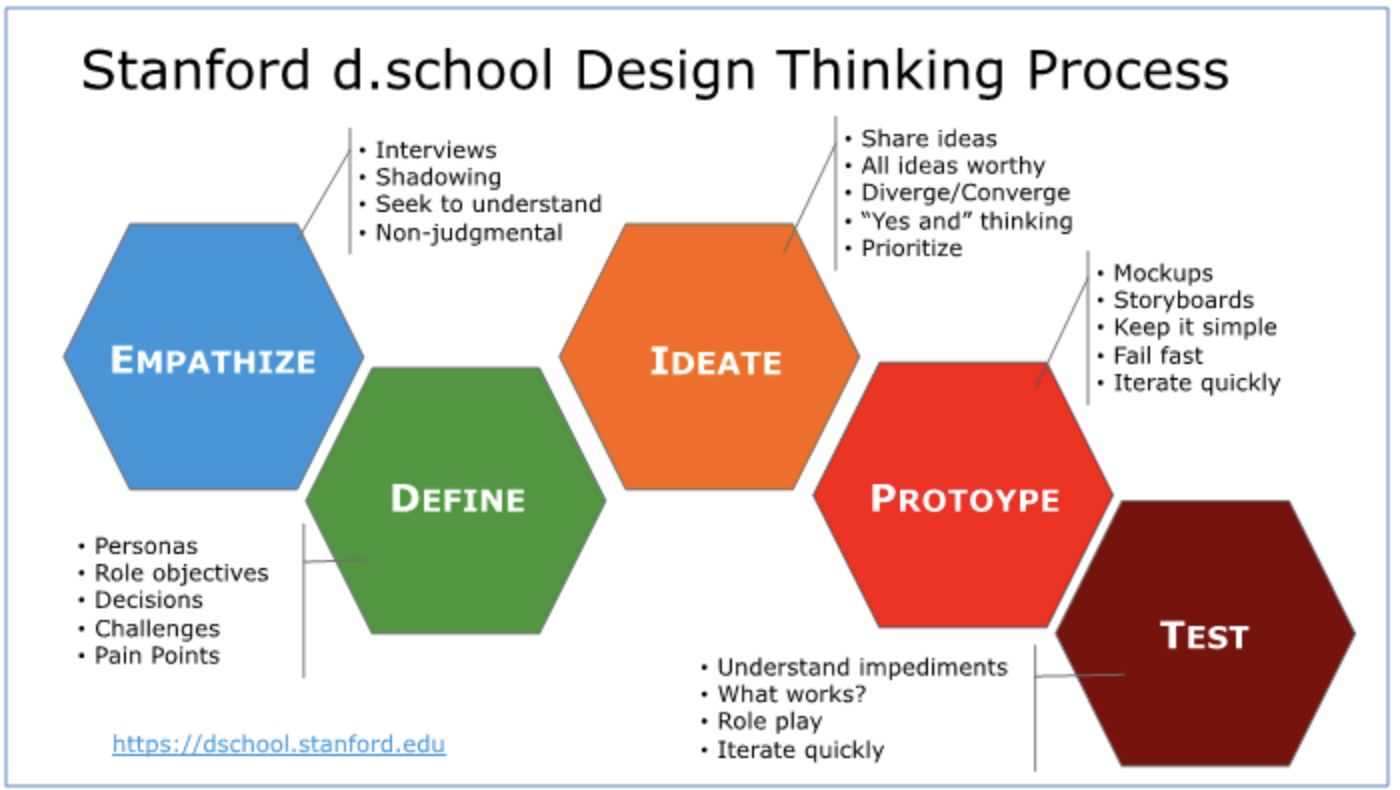Test design thinking as a way to generate more creative solutions to key business problems
Brent Ross is Customer Success Manager at Ibbaka. See his skill profile here.
Ibbaka is launching a special pilot program for organizations who are interested in activating a Design Thinking capability to forward an initiative or a set of outcomes. Our aim is to help participating organizations understand where Design Thinking can have an impact, and then to assess the skills potential of people in the organization and how they can use them to apply design thinking to solving key business challenges.to activate the capability, building on what they already know.
Learn more about the pilot and how you can participate.
What is Design Thinking?
Design Thinking is a process for generating and testing innovative solutions that was popularized by the Stanford University d.school and the Hasso-Plattner-Institute. It was formalized at the well know design consultancy IDEO. actually goes by various names, all of which connote a slightly different approach to what is essentially the same discipline.
Ibbaka has developed an Open Competency Model for design thinking that is organized around the five steps in the design thinking process and the roles commonly seen when design thinking is used by teams to solve problems that require creative solutions. Ibbaka manages the 179,000 person Design Thinking group on LinkedIn and has coached many teams on its application. The Open Competency Model for Design Thinking was designed and is being evolved using a design thinking approach. Design thinking is the application of patterns and processes commonly used in design disciplines (architecture, experience design, service design, learning design, software design, etc.) to broader problem sets. Our open competency model for Design Thinking skills is based on the Stanford-IDEO approach to this discipline.
What do you need to activate a capability like Design Thinking?
If you’ve participated in any kind of digital transformation or process design for core business functions such as marketing, sales or product management, you have a sense of what it takes to activate capabilities within the boundaries of a business function with a clear mandate.
Activating these capabilities requires a combination of people, process and technology to ensure that leads are generated, qualified and converted, and that your products and services evolve to meet their needs.
But how do you activate capabilities that are broadly applicable across core functions, like design thinking?
This requires an understanding of:
Outcomes and related projects where the capability could have an impact
Why the capability can impact those outcomes
Who is most likely to be willing to try a new way of working
The skill foundation of people who are eager to adopt the new way of working
Of course, you could just make the decision that you’re ready to pull the trigger across the organization, launch a training program, and ask people to identify areas of application and outcomes as they learn. But tying business outcomes directly to participation in training and development and measuring success can be difficult, even in high performing organizations.
Understand what skills you have and what skills you need
There is a core set of skills that everyone needs to be successful in the application of design thinking. These are skills like active listening, asking questions, empathy, brainstorming and pattern recognition.
Then there are more specialized skills that can dramatically enhance a person’s ability to apply the methodology. These are skills like interviewing, qualitative research and prototyping.
In our open competency model for design thinking, we’ve gone to considerable efforts to identify a wide range of skills that can be applied to successfully implement design thinking in a project. The Ibbaka Talent platform is designed so that you can quickly get a baseline of coverage across a set of individual skill profiles and know what you’re working with.
Start Small, Demonstrate Success with Design Thinking
The best way to learn the application of Design Thinking to your business is to do it. This helps to further illuminate where skills are strong or need development, and gives you a testing ground that is fertile for a success story you can share with other groups to build enthusiasm for the new way of working.
This can help to delay and focus decisions around any eventual training and development spend you may choose to make.
Our pilot program will include coaching for a project team over a period of weeks towards achieving their goals, using the design thinking methodology. We’ll also start by identifying the areas of greatest potential impact.
Want to learn more?
If this approach to activating Design Thinking in your organization sounds like a fit,




